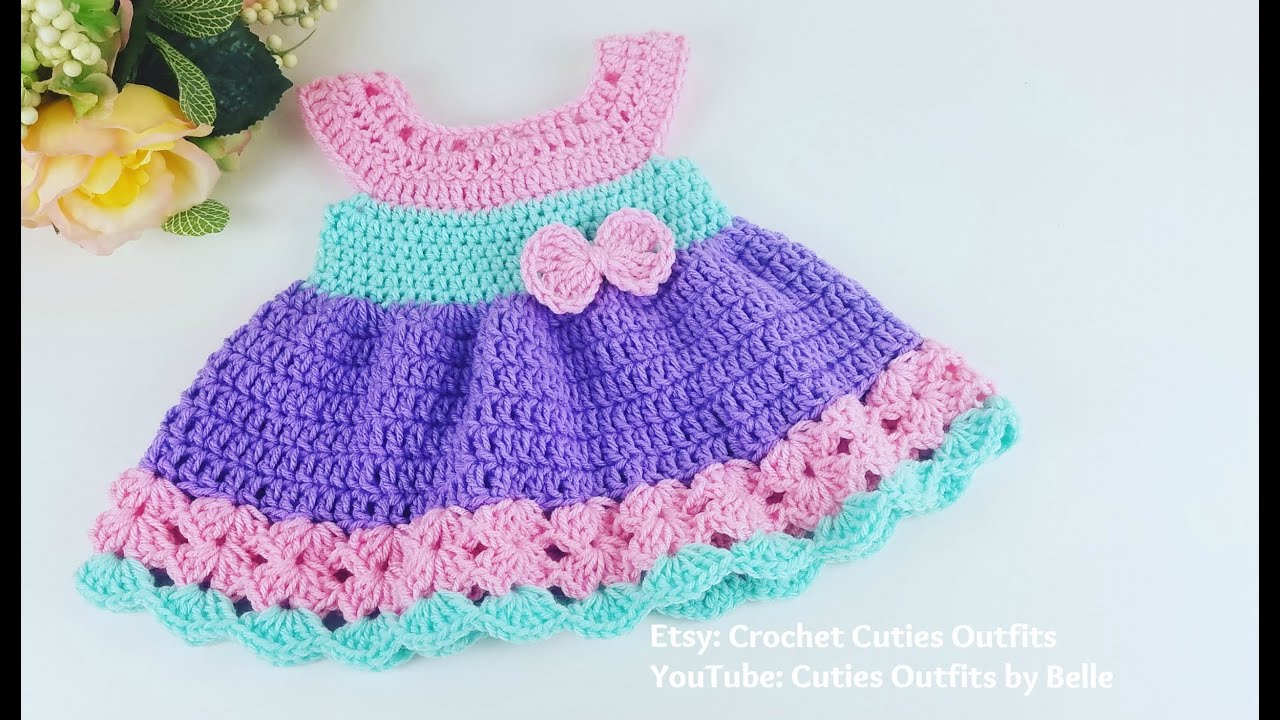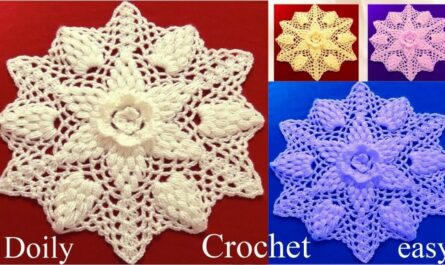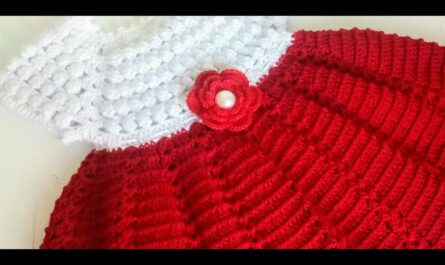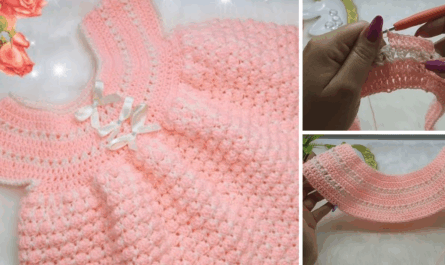Easter is a time of joy, new beginnings, and often, beautiful pastels. What could be more delightful than a handmade crochet baby dress for a special little one to wear during this festive season? Creating a delicate dress for a baby aged 0-3 months is a truly heartwarming project that works up relatively quickly, making it perfect even for those who might be newer to crocheting garments.
This detailed, step-by-step article provides a free crochet pattern for an adorable Easter-themed baby dress, designed with simplicity and comfort in mind. We’ll focus on a top-down, seamless construction, which means less sewing at the end – a win for everyone!
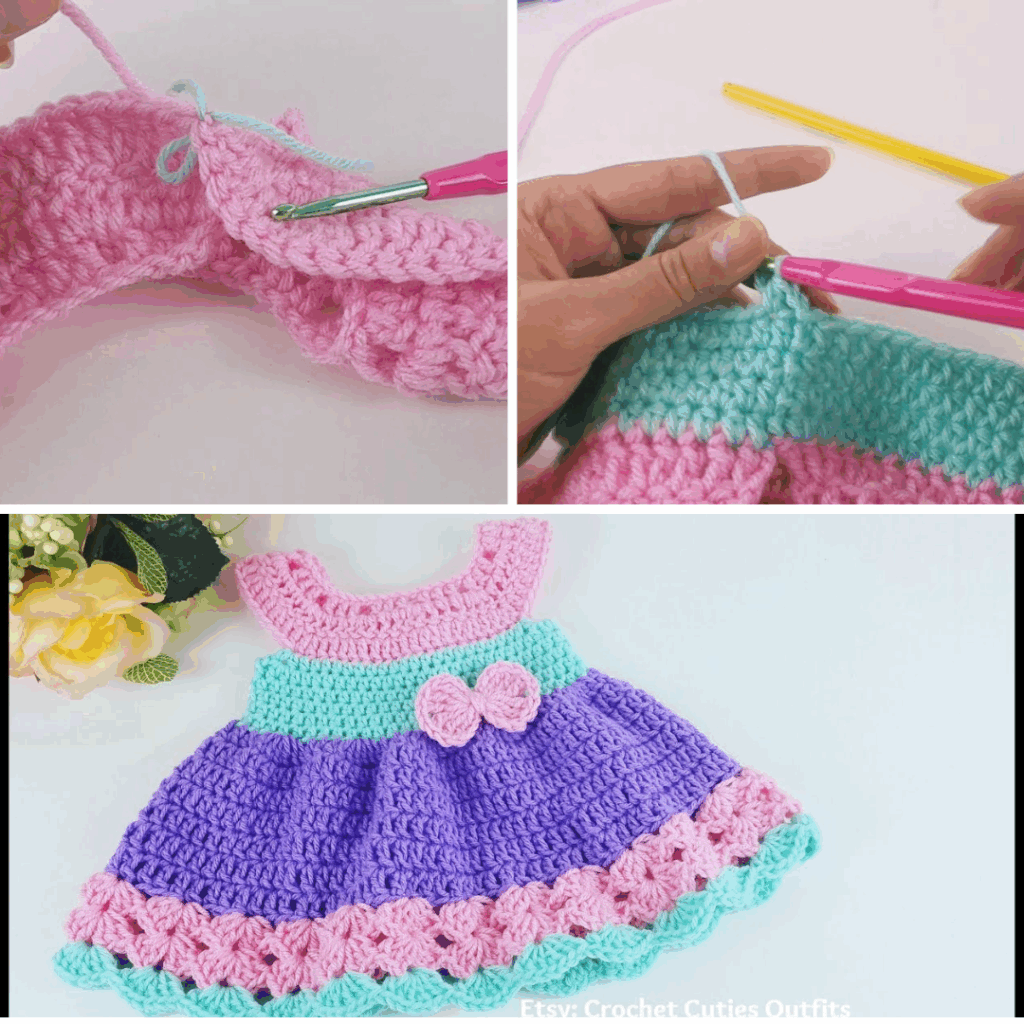
1. Choosing Your Materials: Key to Comfort and Beauty
The right materials are crucial for a baby garment.
- Yarn: For baby items, softness and washability are paramount.
- Fiber: Look for baby acrylic yarn (known for its softness, durability, and easy care) or baby cotton/bamboo blends (excellent for breathability, especially in warmer climates like Phnom Penh). Avoid scratchy fibers.
- Weight: DK (Double Knitting, Category 3) or Light Worsted (Category 3/4) weight yarn is ideal. It provides enough body without being too heavy for a tiny dress.
- Color: Think Easter! Soft pastels like mint green, sky blue, butter yellow, delicate pink, lavender, or classic white/cream are perfect. Variegated yarns can also add a charming touch.
- Crochet Hook: Check your yarn label for the recommended hook size. For this pattern, a 4.0mm (G/6) hook is typically suitable for DK weight yarn, ensuring a soft drape.
- Stitch Markers: Essential for marking increases and the start of rounds.
- Tapestry Needle: For neatly weaving in ends.
- Scissors.
- Small Buttons: 2-3 small, flat buttons (approximately 0.5 inches or 1.25 cm) for the back closure. Consider cute, themed buttons like bunnies or flowers!
2. Understanding the Top-Down Construction
This dress is worked from the yoke down. The yoke is the top portion that covers the shoulders and chest. It starts flat to create a back opening, then joins to form the dress body. This seamless approach minimizes finishing work.
Approximate Size for 0-3 Months:
- Chest Circumference: 16-17 inches (40.5-43 cm)
- Yoke Depth (from neck to underarm): 4-4.5 inches (10-11.5 cm)
- Total Dress Length (shoulder to hem): 9-11 inches (23-28 cm)
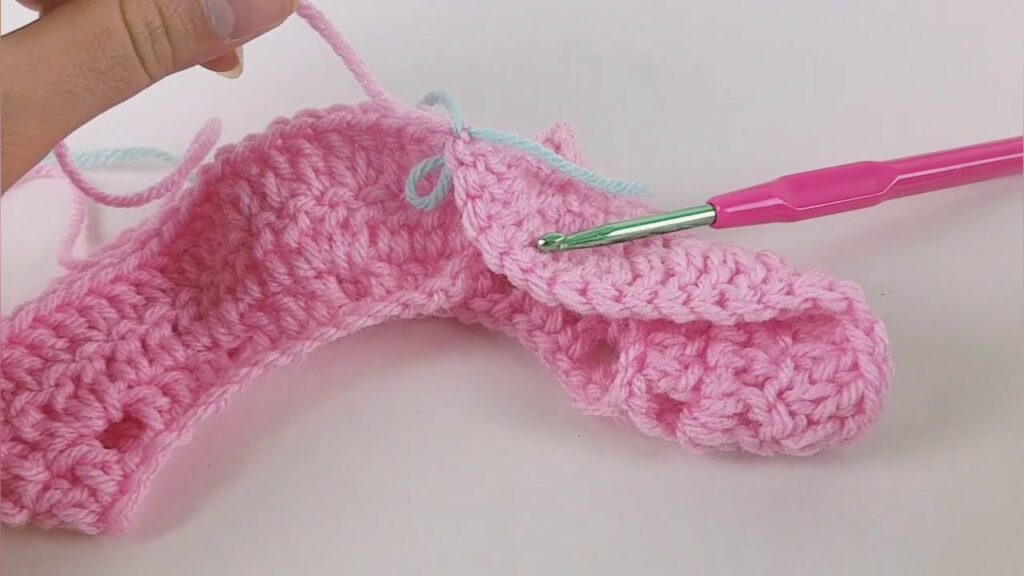
3. Free Pattern: Easter Baby Dress (0-3 Months)
This pattern uses primarily Double Crochet (dc) for the main body for its speed and lovely drape.
Abbreviations Used:
- ch: chain
- sl st: slip stitch
- sc: single crochet
- dc: double crochet
- sk: skip
- st(s): stitch(es)
- sp: space
- inc: increase (work 2 stitches in the same stitch/space)
- (): repeat instructions within parentheses
- *: repeat instructions between asterisks
Part 1: The Yoke (Worked Flat)
The starting chain should loosely fit the baby’s neck. A chain of 52 stitches works well for a 0-3 month size.
Chain 52.
Row 1: Dc in the 3rd ch from hook and in each ch across. (50 dc). Ch 2, turn. (The skipped 2 chains count as the first dc).
Row 2 (Increase Row): Work (1 dc, ch 1, 1 dc) into designated increase stitches/spaces to create the corners.
- Dc in first 7 sts.
- (1 dc, ch 1, 1 dc) in next st. [Place a stitch marker in the ch-1 sp]
- Dc in next 9 sts.
- (1 dc, ch 1, 1 dc) in next st. [Place a stitch marker in the ch-1 sp]
- Dc in next 16 sts.
- (1 dc, ch 1, 1 dc) in next st. [Place a stitch marker in the ch-1 sp]
- Dc in next 9 sts.
- (1 dc, ch 1, 1 dc) in next st. [Place a stitch marker in the ch-1 sp]
- Dc in last 7 sts. Ch 2, turn. (Total 58 dc, 4 ch-1 sps).
Row 3:
- Dc in each dc up to the first ch-1 sp.
- (1 dc, ch 1, 1 dc) in the ch-1 sp. [Move stitch marker to new ch-1 sp]
- Dc in each dc up to the next ch-1 sp. (1 dc, ch 1, 1 dc) in the ch-1 sp. [Move stitch marker]
- Repeat * to * 2 more times.
- Dc in each remaining dc to end of row. Ch 2, turn. (Total 66 dc, 4 ch-1 sps).
Row 4 – 6: Repeat Row 3. (After Row 6, you will have 90 dc and 4 ch-1 sps. Your yoke should measure approximately 4 inches from the neck edge at the deepest point). If your yoke is not deep enough, add one more repeat of Row 3.
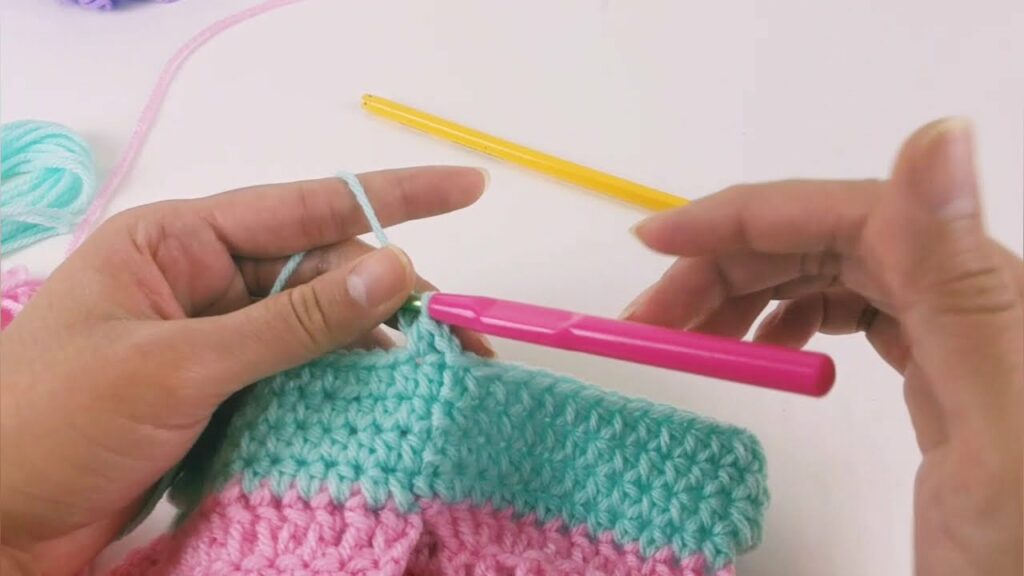
Part 2: Dividing for Body & Sleeves (Joining to Work in the Round)
Now we’ll separate the armholes and close the yoke into a circle.
Row 7 (Body Join):
- Ch 2. Dc in each dc up to the first ch-1 sp (Front Panel 1).
- Skip first ch-1 sp and all dc stitches of the first Sleeve Panel.
- Ch 2 (this creates the underarm opening).
- Dc in each dc up to the third ch-1 sp (Back Panel).
- Skip third ch-1 sp and all dc stitches of the second Sleeve Panel.
- Ch 2 (this creates the second underarm opening).
- Dc in each remaining dc (Front Panel 2).
- Sl st to the top of the initial Ch 2 to join the round. You are now working in the round. (Total dc count will depend on your specific starting stitch count; ensure it’s an even number).
Part 3: The Skirt (Worked in Rounds)
Now the dress body will grow downwards.
Round 8: Ch 2. Dc in each dc around the dress body, including working 2 dc into each of the Ch-2 sps from the underarm joins. Sl st to top of initial Ch 2.
Round 9 – 14: Ch 2. Dc in each dc around. Sl st to top of initial Ch 2. (This creates a straight, comfortable skirt. If you want more flare, you can add an increase round: every 3rd or 4th round, ch 2, dc in next 9 sts, 2 dc in next st. Repeat around. Sl st.)
Round 15 (Shell Stitch Border – Optional but pretty):
- Ch 1. Sc in same st.
- Sk 2 sts, (2 dc, ch 1, 2 dc) in next st (this forms a shell).
- Sk 2 sts, sc in next st.
- Repeat * to * around. Sl st to first sc to join. If the pattern does not end evenly, adjust the last few skips/stitches as needed to meet the first sc.
Fasten off and weave in ends.
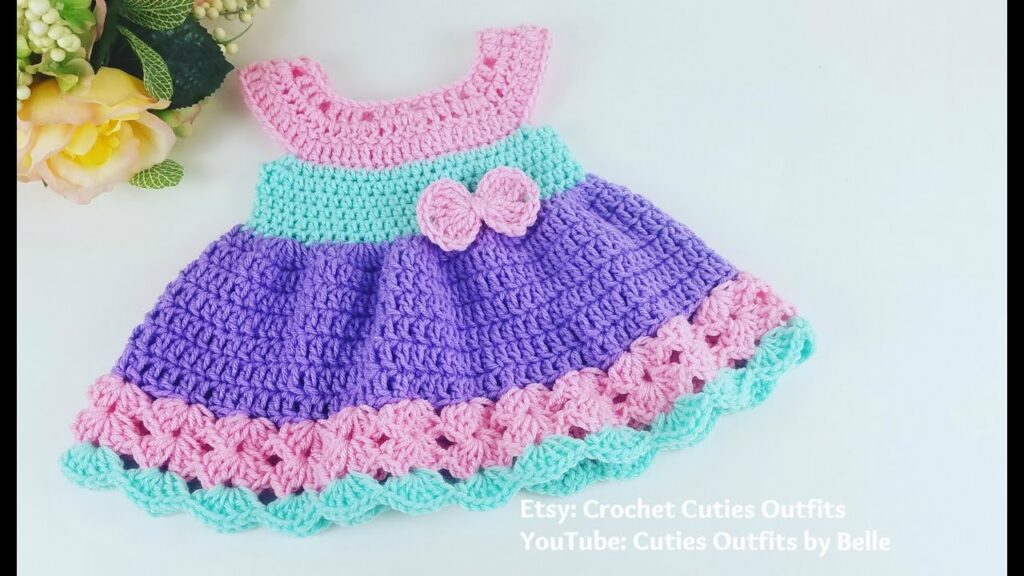
Part 4: Finishing Touches
- Sleeve Edging (Optional but recommended):
- Attach yarn to the bottom of one armhole (where the Ch 2 sp was).
- Round 1: Ch 1. Work sc evenly around the armhole opening (approximately 1 sc per dc row, and 2 sc in the Ch-2 underarm sp). Sl st to first sc.
- Round 2 (Optional decorative edge): Ch 1. Sc in each sc around. Sl st to first sc.
- Fasten off and weave in ends. Repeat for the second armhole.
- Neckline & Back Opening Edging:
- Attach yarn to the bottom corner of one back opening edge.
- Work sc evenly up the side of the back opening, around the entire neckline, and down the other side of the back opening. Sl st to join if working back to starting point, or simply fasten off.
- Button Loops: On one side of the back opening (usually the left side when looking at the back of the dress), create button loops.
- Method 1 (Chain Loops): Ch 3-4 (adjust based on button size), sl st into a nearby stitch to form a loop. Space 2-3 loops evenly along the back opening.
- Method 2 (Picot Loops): Sc into a stitch, ch 3, sl st into the 3rd ch from hook (picot). Space 2-3 picots evenly.
- Buttons: Sew your small, flat buttons onto the opposite side of the back opening, aligning them with your newly created button loops.
- Weave in All Ends: Use your tapestry needle to meticulously weave in every single yarn tail for a neat and professional finish. This is crucial for baby items so loose ends don’t get caught.
Video Tutorial :
You’ve now created a beautiful, handmade Easter baby dress, filled with love and ready to be cherished. Happy crocheting!
